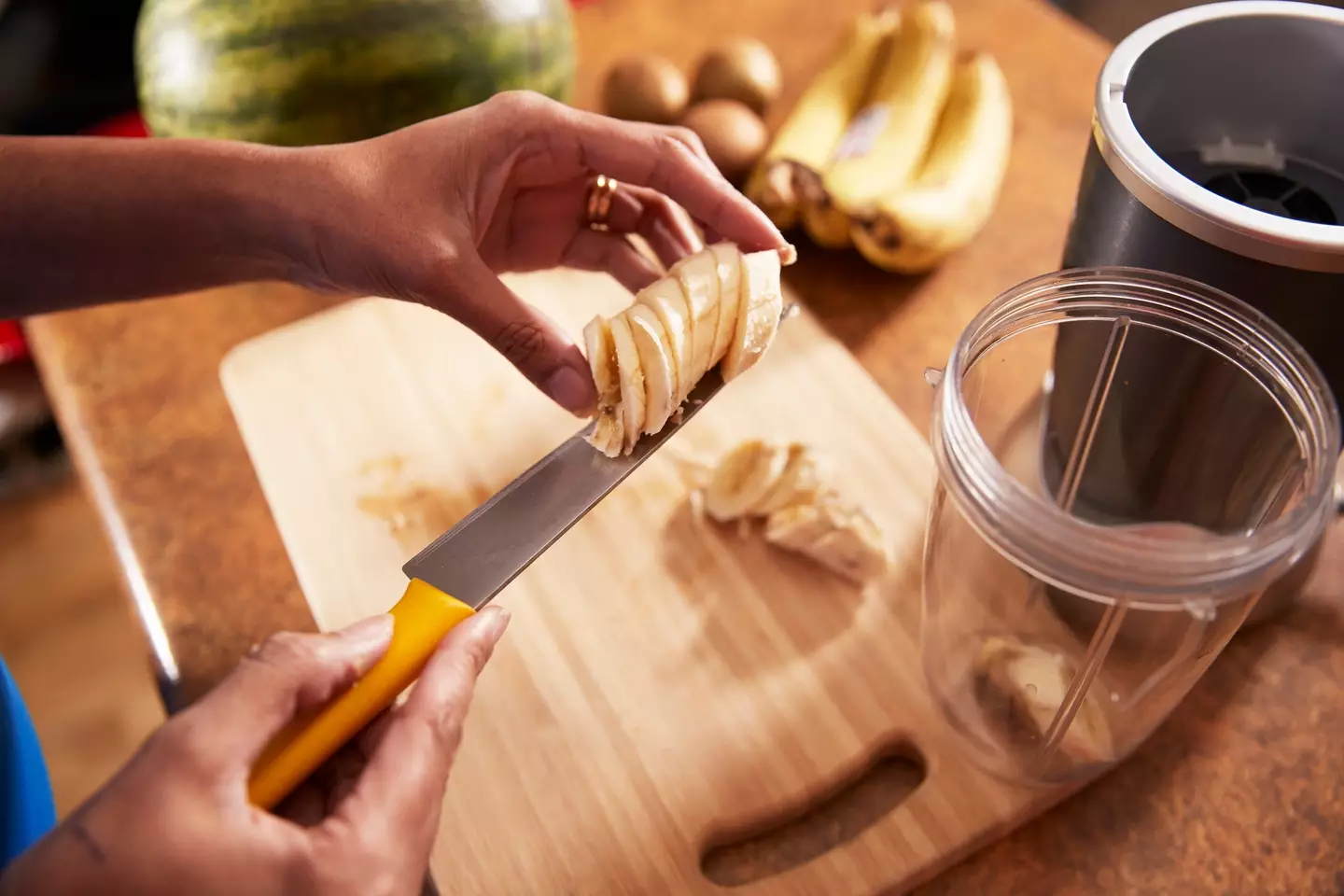
When you’re putting together a smoothie, it can be tempting to bung anything half-healthy into it. After all, what is a smoothie if not a blended pulp of healthy foods that would take more time and effort to eat individually?
If you’ve ever made a fruity smoothie, chances are one such bunged-in ingredient was a banana or two. They’re fibrous, packed with potassium, and vitamin B6, and even feature some vitamin C and protein to boot. All sounds like a win, right?
Wrong.

Advert
As it turns out, bananas can actually limit how much nutrition you absorb from other elements of your smoothie.
The root of this is in an enzyme called polyphenol oxidase (PPO), and you’ll have seen it in action whenever a banana has browned from a cut or bruise. According to experts, high-PPO foods, when consumed with flavanol-rich foods, can inhibit your flavanol absorption.
If you’re unfamiliar, flavanols are plant compounds with strong antioxidant properties and links to improved memory, cardiovascular health, and brain function – in other words, they’re one of they reasons you should eat fruit and vegetables at all.
They have also been shown to have antibacterial, anti-inflammatory, antiviral and neuroprotective qualities too, as well as potentially having a prebiotic effect on gut microbiomes.
Advert
Flavanols are particularly abundant in strawberries, blackberries, blueberries, pears, pineapples, manos, and cocoa, among others, so you can see where some unfortunate smoothie crossovers might happen banana-wise.
News that bananas and other PPO-rich foods can inhibit flavanol uptake comes from a study conducted by the University of California and the University of Reading. Lead author Javier Ottaviani, director of the Food & Nutrition Core Laboratory at Mars Edge and an adjunct researcher at the University of California’s department of nutrition, said:
“Research over the past 20 years has shown flavanols can help to maintain health as we age.
“For example, one large and rigorous clinical trial in The American Journal of Clinical Nutrition showed that a daily intake of 500 mg of flavanols reduced cardiovascular deaths, including heart attacks and stroke, by 27%.”
Advert
He added: “Cardiometabolic health contributes to a healthy lifespan by reducing risk factors for cardiac and metabolic diseases, including obesity, hypertension, and diabetes."
Ottaviani said the study was conducted because ‘we wanted to understand, on a very practical level, how common foods and food preparations, such as smoothies, could affect the availability of flavanols to be absorbed by the body after intake’.
Researchers took a group of eight healthy men aged between 25 and 60 and had them follow a low-flavanol diet in the day preceding and the days during the study. They were then given smoothies rich in PPOs, along with another with a low PPO concentration. A control was incorporated via a flavanol capsule, too.
Participants’ blood and urine samples then measured their flavanol levels, with researchers seeing an 84% lower concentration of flavanols after consuming the banana smoothie. The PPO-light smoothie yielded similar flavanol levels to the control capsule, clearly indicating that the banana-containing smoothie had massively inhibited flavanol absorption.
Advert

The results showed that the effects of PPO on flavanol availability occurred during smoothie preparation, before consumption,” explained Ottaviani.
“Because of this, sex differences are less relevant for this study, and we consider that the findings are generalizable to both men and women.”
He continued: “Bananas remain a great fruit and a great option for smoothie preparation, but not if you’re aiming at maintaining the flavanols in your smoothie.”
Advert
So there you have it: if you want the most bang for your buck when you’re eating a smoothie, you’re better off leaving the banana out.
